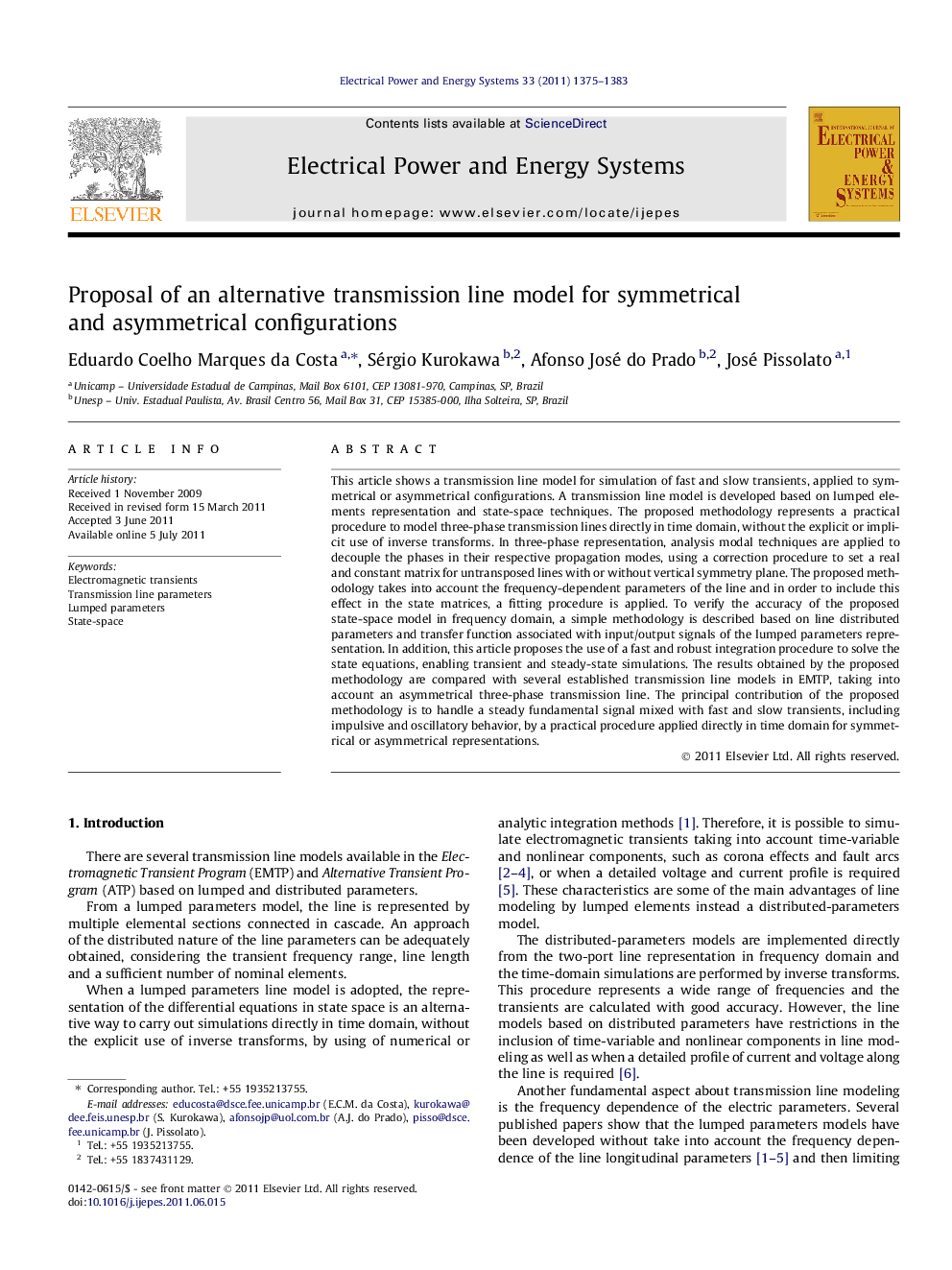| Article ID | Journal | Published Year | Pages | File Type |
|---|---|---|---|---|
| 400514 | International Journal of Electrical Power & Energy Systems | 2011 | 9 Pages |
This article shows a transmission line model for simulation of fast and slow transients, applied to symmetrical or asymmetrical configurations. A transmission line model is developed based on lumped elements representation and state-space techniques. The proposed methodology represents a practical procedure to model three-phase transmission lines directly in time domain, without the explicit or implicit use of inverse transforms. In three-phase representation, analysis modal techniques are applied to decouple the phases in their respective propagation modes, using a correction procedure to set a real and constant matrix for untransposed lines with or without vertical symmetry plane. The proposed methodology takes into account the frequency-dependent parameters of the line and in order to include this effect in the state matrices, a fitting procedure is applied. To verify the accuracy of the proposed state-space model in frequency domain, a simple methodology is described based on line distributed parameters and transfer function associated with input/output signals of the lumped parameters representation. In addition, this article proposes the use of a fast and robust integration procedure to solve the state equations, enabling transient and steady-state simulations. The results obtained by the proposed methodology are compared with several established transmission line models in EMTP, taking into account an asymmetrical three-phase transmission line. The principal contribution of the proposed methodology is to handle a steady fundamental signal mixed with fast and slow transients, including impulsive and oscillatory behavior, by a practical procedure applied directly in time domain for symmetrical or asymmetrical representations.
► Development of a frequency-dependent transmission line model in the state space. ► Formulation of a three-phase representation. ► Extending the formulation for symmetrical and asymmetrical geometric configurations. ► Time-domain simulation of electromagnetic transients including time-variable elements. ► Validation of the proposed model from other well-established computational models.
